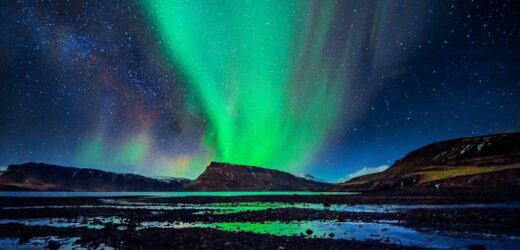THE Northern Lights are one of the most famous natural phenomena in the world.
But did you know that there is something even rarer called the Southern Lights?
Tourists often head to Norway and Iceland to see the Northern Lights, with tours and trips to see the lights.
While it isn't always guaranteed, they are easy to spot depending on the day.
But further afield are the Southern Lights, also known as the Aurora Australis.
Found across Australia and New Zealand, they are very similar with pinks, purples and greens.
Read more on Northern Lights
Northern Lights were as dazzling as spangly Elton & better than Elizabeth
What causes the Northern Lights?
They are best spotted between May and August, and in a dark sky area with little light pollution.
Tasmania in Australia has some of the best places to spot the lights, with the chance to see them all year round, as well as Stewart Island and Lake Tekapo In New Zealand.
Other spots include Patagonia, Argentina and even Antarctica.
Last month, Aussies were stunned by the light display which was unusually spotted across Perth
Most read in News Travel
The holiday island with year-round sun and affordable all-inclusive breaks
Major UK airport set for Easter holiday chaos amid 10-day strike
The incredible Guinness brewery coming to the UK this year
The rise of the new 'hush holiday' trend that is seriously annoying bosses
Scott McDonald told local media: "It is not very often you get the Southern Lights this strong and to see it 125km north of Perth Western Australia was just as crazy and will be hard to sleep tonight. What a rush."
There is little difference between the different auroras, except for their location and the Northern Lights are often more easily visible.
The amazing natural light show is caused by electrically charged particles from the sun, smashing into gaseous particles in our planet's atmosphere.
This solar flare is often joined by a coronal mass ejection – which is a huge expulsion of plasma from the sun's outer layer – and prompts a geomagnetic storm, which brings the aurora to lower latitudes.
The solar storms cause bright, colourful dancing lights in white, green, pink and purple that illuminate the sky.
The most common colour of the aurora is green, which is created when oxygen molecules about 60 miles above the ground react with the particles, whereas nitrogen causes a blue or purple hue.
While you will have to go pretty far to see the Southern Lights, you can thankfully sometimes spot the Northern Lights in the UK.
Last month, Brits across Norfolk and even Kent spotted the famous light show.
Source: Read Full Article











